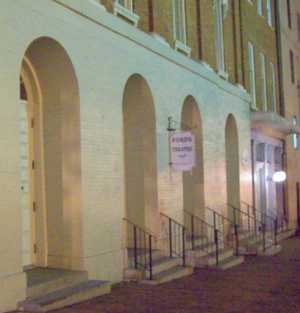In order to understand some of the possible reasons behind criminals’ actions, research is done to find answers. Comparing criminal organizations to that of a social institution is one way to understand how it works. There are theories that are not conclusive, but are available to help understand the possible excuses criminals use to defend his or her actions.
Social Institution and Criminal Organizations
Social institutions are a group of people who have come together for a common purpose. The American Red Cross, Boy Scouts, and the Boys and Girls Club of America are some examples of a social institution. Criminal organizations are referred to as social institutions because in some ways they are. A criminal organization involves individuals who come together for the purpose of committing a crime. A social institution is usually run by the individual(s) who are the strongest, wealthiest, and the founders of the institution. This format would be the same in a criminal organization. The individual(s) who were the strongest or wealthiest are usually the ones who make all of the decisions on who does what and when the crime takes place. The biggest difference between a social institution and a criminal organization is a social institution is generally thought of performing legal acts and a criminal organization pursues illegal acts (Lyman, 2007).
Theories
There are theories that explain different aspects of crime. There are several theories, but the ones to be discussed include the alien conspiracy theory, the rational choice theory, and the deterrence theory. The alien conspiracy theory bases the reasons for criminal actions is because of outside influences. It proclaims that criminals have moved to the United States and started a criminal organization here. The media and movies have helped to fuel this theory. Members of a criminal organization are portrayed as men from other countries that are dressed a certain way and carry themselves a certain way. The rational choice theory proclaims that each individual is capable of making his or her own decisions. Everyone has the choice on whether or not to participate in any form of criminal activity. The deterrence theory is split into two sub categories. The two sub categories are the general deterrence theory and the special deterrence theory. The general deterrence theory explains that crimes can be prevented through the threat of punishment. The individual would think twice before he or she committed a crime knowing that there is a punishment awaiting him or her. The special deterrence theory explains that in order for the individuals to think about the punishments before committing the crime, the punishments need to be harsher than what is currently in place. Criminals will think twice before going down the path of criminal activity. If the individual has already offended once than if the punishment is harsher the second time, he or she may choose to not participate (Lyman, 2007).
Applying Theories to Organized Crime
The alien conspiracy may apply to organized crime. Outside influence may be strong enough to make individuals participate in criminal activity. If a family member is part of a criminal organization, then the pressure for other family members to be loyal and help may be hard to object to. The rational choice theory does apply to organized crime. Every individual has the choice on whether or not to participate in crime. There may be added pressure to participate, including loss of job or life, but the choice is still in the hands of each individual. The general deterrence theory does not apply to organized crime. The members of the crime organization may have several wealthy members who can help validate alibis, bail, and use blackmail to get out of being charged with a crime. The crime organization may have officials, including police officers, lawyers, and senators, in their pockets. This allows the members to skate free on charges. The special deterrence theory does not apply to organized crime either. It is rare that there is someone who will come forward about the crimes that are committed in those organizations. The members of the criminal organizations will continue to commit crimes even if the punishments become harsher. The members will stick together and continue for the reasons that they can and for profit.
Reference
Lyman, M.D., & Potter, G.W. (2007). Organized crime. (4th ed). Upper Saddle River, NJ: Pearson/Prentice Hall


